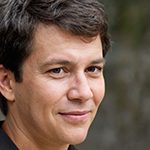6 Key Insights About Wat Phra Singh Temple in Chiang Mai
Wat Phra Singh is a temple of high esteem in Chiang Mai, and it is a must-visit for its mosaic charm, naga gable in gilding, and wonderful library collection. Also known as The Golden Temple, this sacred structure in Thailand holds great significance and has undergone renovations and expansions throughout its history.
In the 14th century, the temple was known as Wat Li Chiang Phra, and its transformation began in 1367 when the revered Phra Buddha Sihing (the Lion Buddha) found a home within. And wrapped in mystery, this sacred image’s origins trace back to Sri Lanka, inspired by India’s legendary lion of Shakya housed in the Mahabodhi Temple at Bodh Gaya. Its undeniable allure remains captivating to this very day.
Wat Phra Singh is one of Chiang Mai’s most visited temples, attracting crowds throughout the day, but mornings bring cooler weather and easier parking near the gates. Respectful dress is expected, and a light cover helps when entering temple areas. Using side streets for parking saves time, but avoid blocking local driveways. For compact travel around the Old City, riders benefit from our scooter rental options, which are easy to park and maneuver.
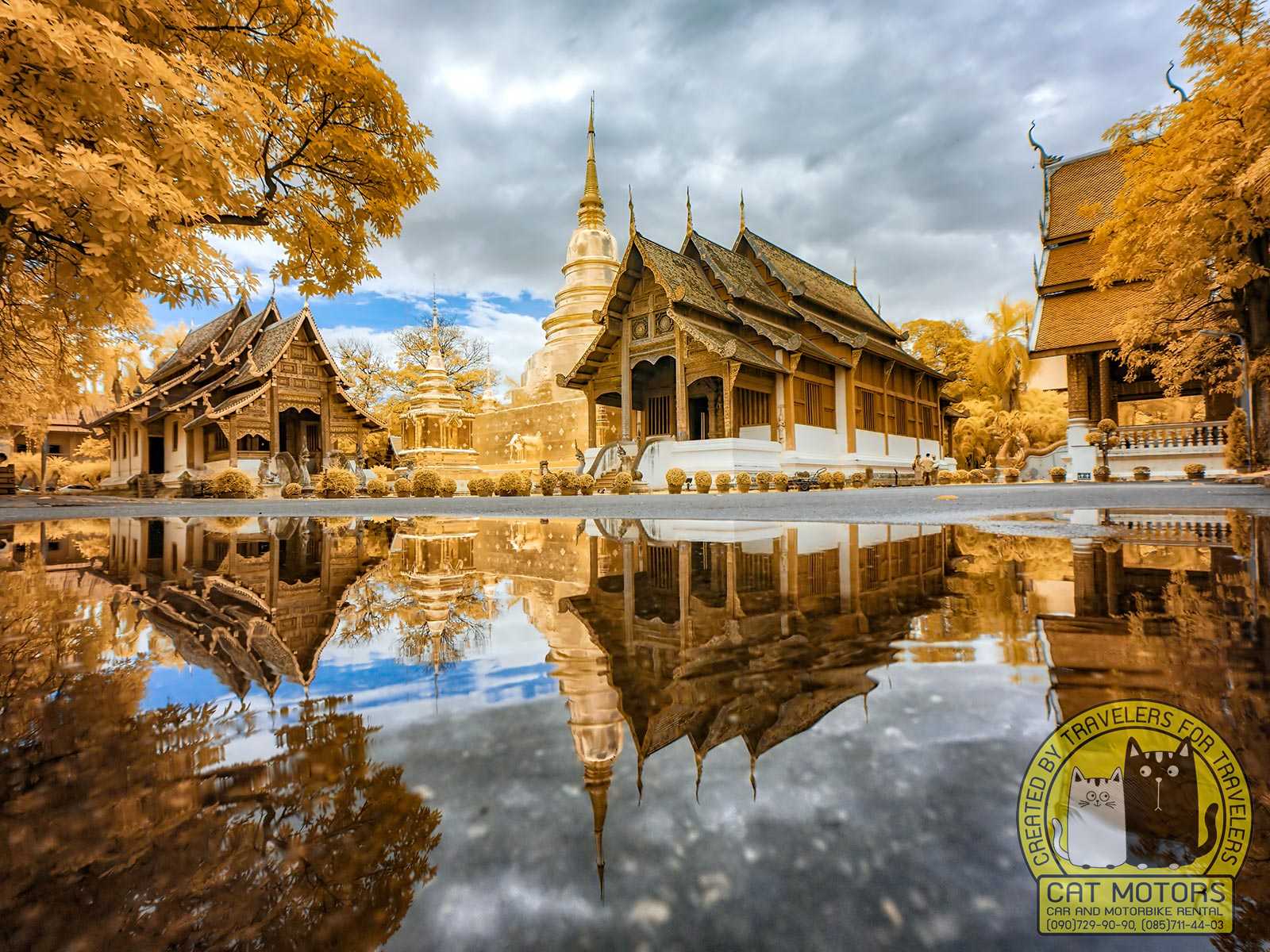
The temple reveals A beautiful tale from every aspect – offering so much for its visitors; our travel guide explores the magic of Wat Phra Singh: Chiang Mai’s unification of stunning architecture, deep-rooted traditions, and spirituality.
Tracing the Roots of Wat Phra Singh
Origins of Wat Phra Singh return to the 14th century, when King Phayu, honoring his father, King Kham Fu, founded this gem and initially named it Wat Lichiang Phra. Though this happened during the Mangrai dynasty, destiny had more in store for this sacred place. In 1367, an important Buddha image known as Phra Singh Buddha was gifted to the temple by Sri Lanka.
And Legend has it that it resembled the grand lion of Shakya from the Mahabodhi Temple in Bodh Gaya, India.
Fun fact: There are two more Buddha statues the country that are claimed to be the original Phra Buddha Sihing: one is housed in Wat Phra Mahathat in Nakhon Si Thammarat, and another in the Bangkok National Museum – but no one knows which one is the original!
The Phra Buddha Sihing statue became a divine icon, the revered soul of the Lanna Empire, and, finally, the pride of Chiang Mai. Moreover, the exceptional efforts of Lanna architecture and workmanship granted the title of this golden temple, “royal temple of the first grade,” during the year 1935 by King Ananda Mahidol.
Even today, during the exciting Songkran festival (celebrating the new Thai Year), the Phra Buddha Sihing graces the city in an annual procession, symbolizing continuity and devotion. The faithful show their respect and reverence for the statue by sprinkling water over it as it passes by.
Furthermore, the famous monk Khru Ba Srivichai restored and expanded the temple in the 1920s, adding new buildings and decorations in the Lanna style.
The resemblance of Lanna’s artistic skills and creativity attracts many visitors. The temple’s architecture also incorporates elements from nearby Sri Lankan and Burmese cultures, creating a faultless fusion of ingenuity—all of it offering itself as a spiritual and cultural core for Chiang Mai.
As soon as you enter, fascinating paintings showing stories from Buddha’s life and the essence of Thai culture are brought to life. And through its monastery and school, Wat Phra Singh fosters the study and practice of Buddhism, serving as more than merely a historical artifact from the past.
Touring The Goden Temple: What To Expect
Wat Phra Singh welcomes all for an inspirational tour in Northern Thailand with its stunning Lanna-style architecture and sacred Buddha statues. Even though it is located in the middle of the city, visitors still find themselves in a calm and peaceful environment with plenty to see.
Plus, you’ll want to know more about the temple complex and each impressive section before you go – with each conveying a distinct beauty and importance. With that in mind, the following are the must-see attractions during your visit:
Main Chedi
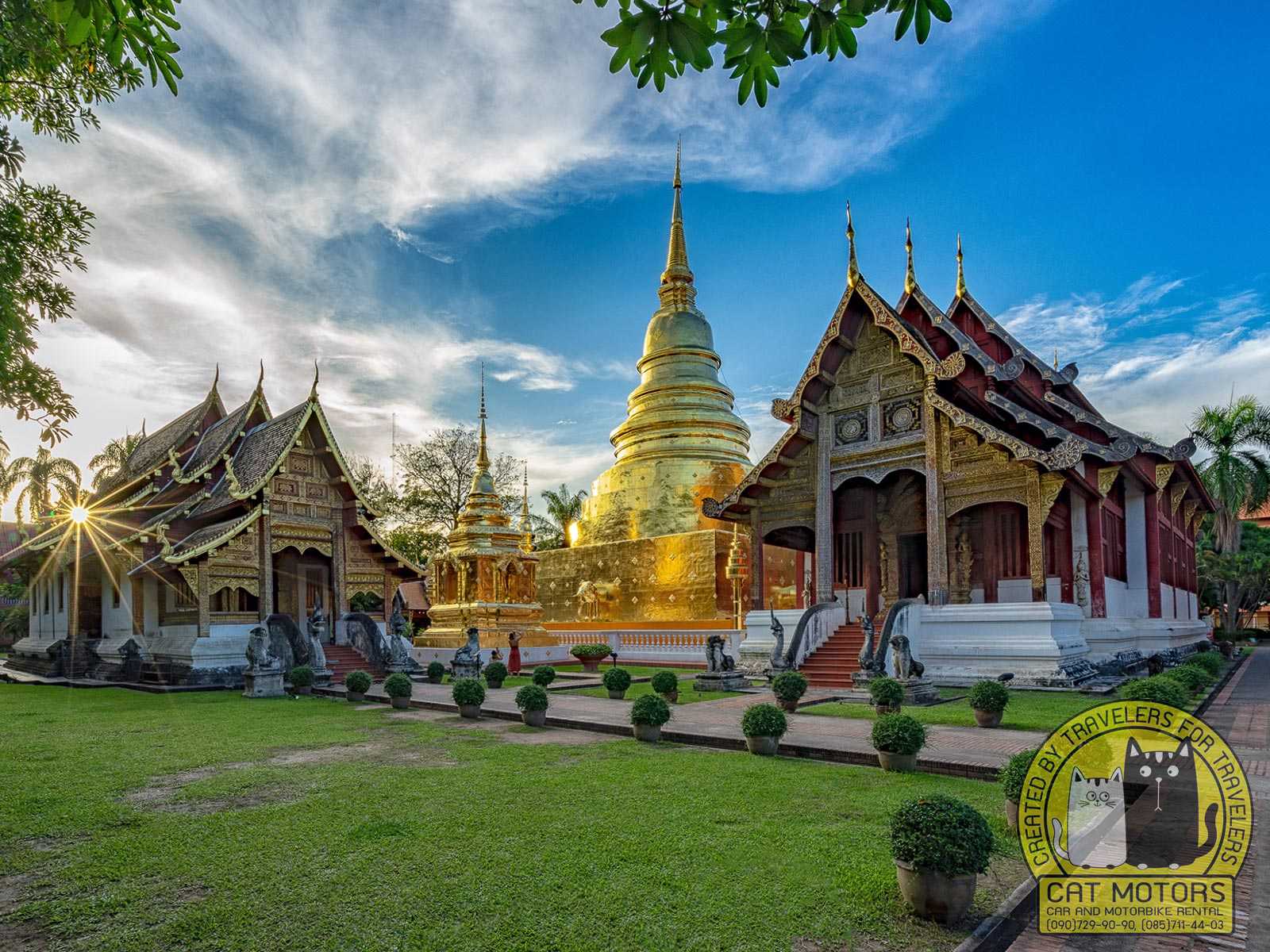
The temple’s oldest building, which dates to 1345, was created by King Phayu to house ashes of his father. This circular chedi, which has been enlarged throughout the ages, serves as a significant temple emblem and is decorated with elephant sculptures that appear from its sides.
Viharn Lai Kham
Enter this enchanting building, built in 1345, to enshrine the revered Phra Buddha Sihing image, also named as Phra Chao Thong Tip. Also known as the Wihan Lai Kam, the exterior glitters with gold and ochre colors, while the interior showcases a splendid red lacquer and gold leaf pattern, with the image of Phra Buddha Sihing at its center.
In Theravada Buddhist architecture, especially in Thailand, a “viharn” or “wihan” refers to the assembly hall where monks and laypeople gather for ceremonies or to hear sermons. It’s typically a building within a temple complex that is open to the laity. It’s distinct from the “ubosot” or “bot”, which is the ordination hall reserved primarily for monks.
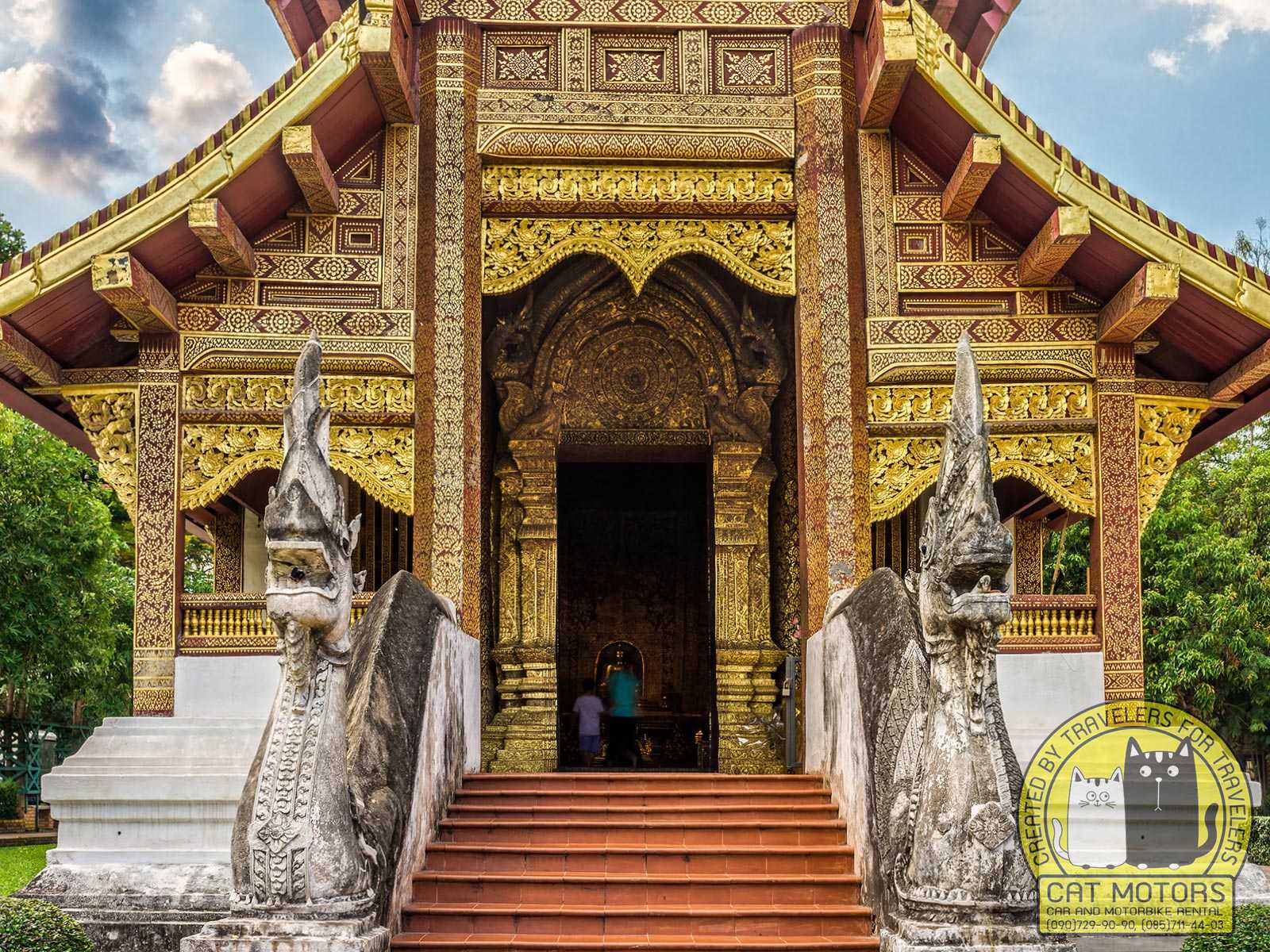
The statue is housed in a small chapel called Viharn Lai Kham, adorned with exquisite lai kham and carried through the streets of Chiang Mai in a religious procession during the Songkran festival.
But that’s not all. The building also houses four life-like statues of monks who were influential in the history and development of Wat Phra Singh and the Lanna Kingdom. They are Phra Sangkharaj Kaeo, Phra Maha Ratchamangalacharn, Phra Ajahn Mun Bhuridatta, and Phra Ajahn Sao Kantasilo.
They were renowned masters of Buddhism who wrote, taught, and practiced meditation in various regions. The statues are made of fiberglass and were created by a local artist named Chalermchai Kositpipat in 1992.
They are very realistic and detailed, capturing the expressions and personalities of the monks. Also dressed in authentic robes and accessories, they reflect their status and style.
Ho Trai
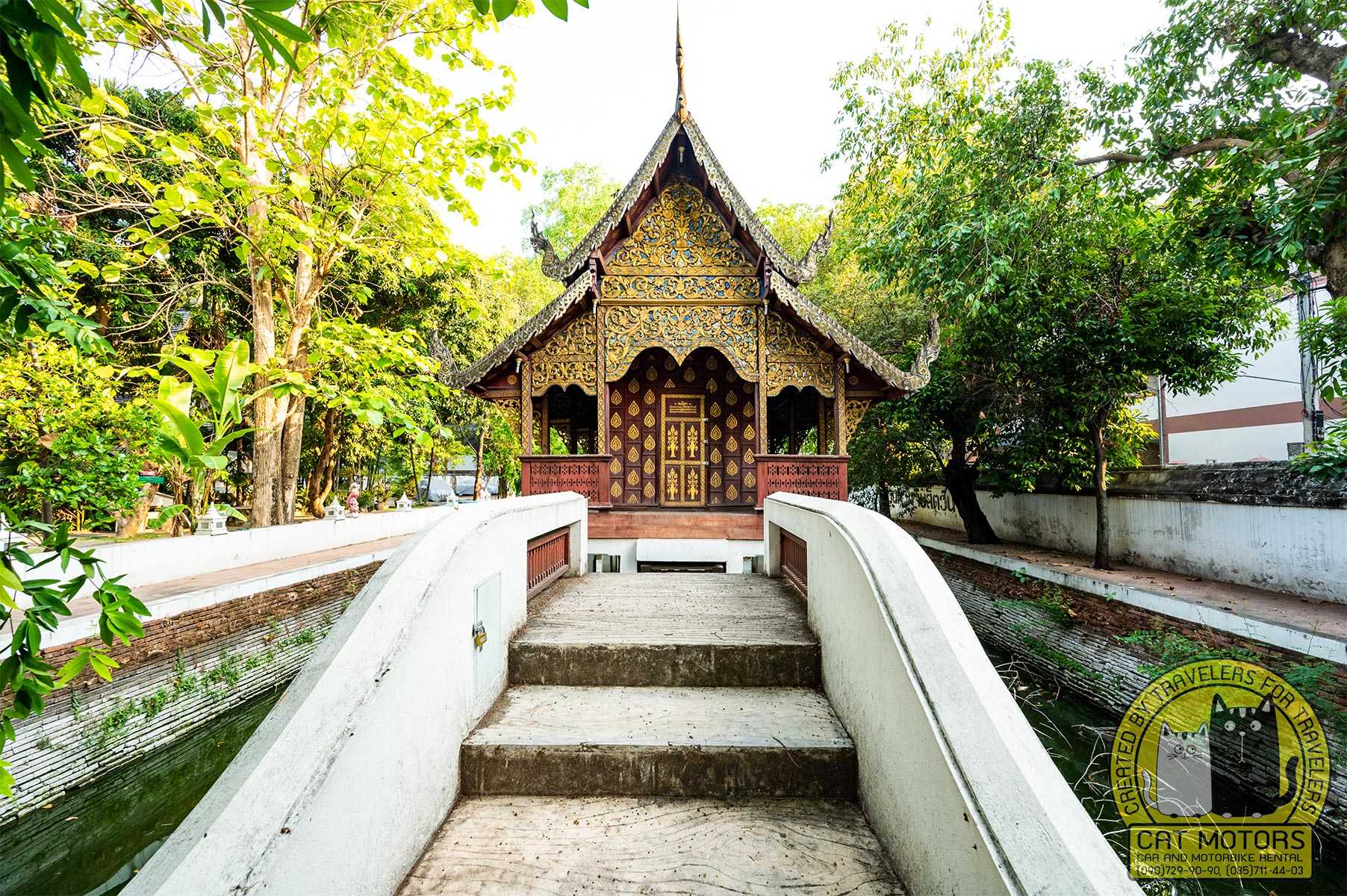
The regal temple’s library, a delicate teak and stucco pavilion perched on stilts. Within its protective confines lie ancient Buddhist scriptures and manuscripts, safeguarded from insects and humidity. Adorned with bas-relief angels, the temple library echoes the enthralling style of Wat Chet Yot – another renowned temple in Chiang Mai.
Ubosot
Known as the temple’s ordination hall, where monks perform sacred ceremonies and rituals. The ubosot of Wat Phra Singh, constructed in 1806, has a classy style with a two-tiered roof decorated with chofahs (mystical tall thin birds) and a white front with gold embellishments.
Inside, a splendid bronze Buddha image takes center stage, resting on a pedestal and surrounded by smaller figures. The walls come alive with vibrant murals, vividly portraying scenes from Buddha’s life and teachings.
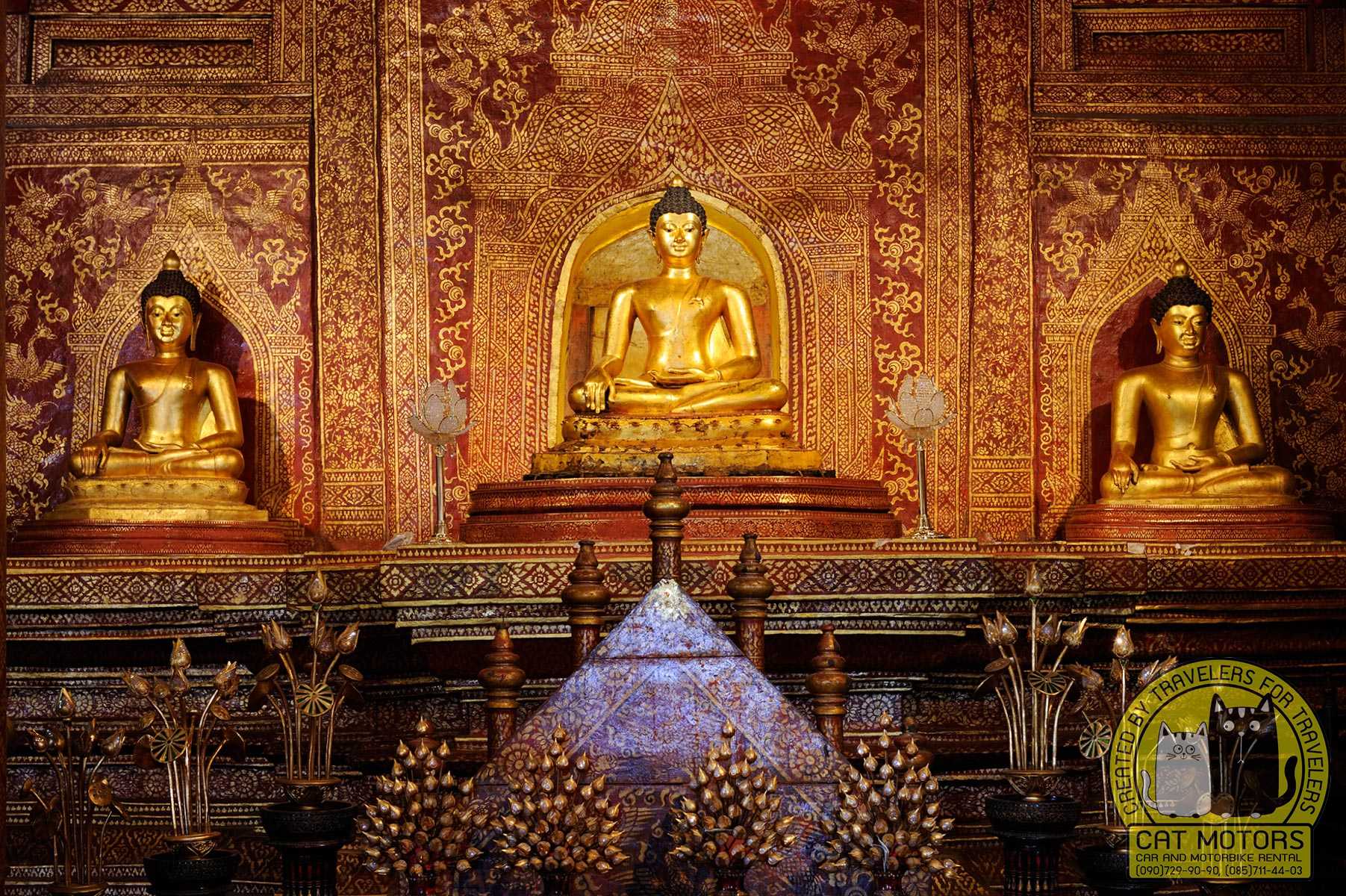
At the end of the day, with every building and turn exposing fascinating insights and inspirational stories, you’ll feel Buddhism’s spiritual essence and breathtaking beauty in Thailand as you set out on your excursion.
Explore the area, and you will be sure to find something extremely fascinating, like the many bells around the area used for various purposes, including calling the monks for prayer and even warding off evil spirits.
Temple Tours: Immerse Yourself In Wondrous Activities
Many people visit Wat Phra Singh annually, and as a result, many guided tours are now available for a more in-depth look at the temple’s enchanting wonders. Here are some top-rated options:
- Private Tuk-Tuk Tour of City Temples: Hop in a tuk-tuk and go on a four-hour adventure that takes you to some incredible temples in Chiang Mai, like Wat Chedi Luang, Wat Sri Suphan, and Three Kings Monument.
More stops include the Tha Phae Gate and the vibrant Warorot Market, where you can taste delicious local street food. It provides hotel transportation, an English-speaking guide, and even bottled water – it’s an exciting way to discover the city.
- Temples and Old City Guided Walking Tour: If slow and steady is your groove, then spoil yourself with a two-hour walking tour that unveils the architectural and artistic marvels of Wat Phra Singh, Wat Chedi Luang, and Wat Phan Tao. You’ll delve into everything you want to know about each temple you visit, led by a perceptive guide – promising a refreshing experience.
- Temples & Culture Tour: Explore Wat Phra Singh, Wat Chedi Luang, Wat Chiang Man, and Wat Suan Dok on this half-day excursion for meaningful interaction with Chiang Mai’s cultural and spiritual legacy. Additionally, you’ll get the chance to participate in a monk chat session where you may ask the monks anything and learn about Buddhism from them directly.
Select the guided tour or activity that ideally matches your interests and tastes to uncover the golden temple’s true beauty. From the back of a tuk-tuk, on foot through the historic streets, or via soul-enriching chats with the respected monks – there are plenty of ways to learn the temple’s entrancing mysteries.
Tips For Visiting: Making The Most Of Your Sacred Journey
Wat Phra Singh is open daily from 6 am to 5 pm and is a temple that welcomes visitors from all over the world, but there are some things you should know before you go. Here are some tips to help you make the most of your visit:
Best Time To Visit
Chiang Mai has a tropical climate, which can get hot and humid throughout the year.
- The best time to visit Wat Phra Singh is in the morning or late afternoon when the temperature is more relaxed and the light is softer. You can also avoid the populated crowds and enjoy a more peaceful atmosphere.
- If you want to see the temple at its most festive, you can visit during the Songkran festival in April, when the Phra Buddha Sihing image is carried in a procession, which the spectators join in by splashing water on each other to celebrate the new year!
Dress Code And Guidelines
This beautiful golden temple is a special and sacred place, so it’s essential to dress respectfully and modestly when visiting.
- Remember to cover your shoulders, knees, and midriffs, and opt for loose-fitting attire as a sign of respect for the holy site.
- Before entering the temple buildings, please take off your shoes as a customary practice, and be mindful not to touch or point at any Buddha images.
- When you’re around the temple area, it’s great to keep a calm and respectful vibe, so try to lower your voice and avoid smoking or drinking alcohol on the temple grounds.
Essential Preparations And Exciting Expectations
There is a lot to see and learn if you visit Wat Phra Singh, but you don’t need to bring a lot with you to make the most of your trip. Bring some money for the entrance fee (only 20 THB per person) and even a little extra if you’re up for donating to the temple or plan to buy trinkets from the stores within.
Don’t forget your water bottle to stay refreshed, and definitely bring your camera to capture all the temple’s beauty! Depending on your pace, you can expect to spend about an hour or two exploring the temple complex.
You might also encounter some friendly monks and novices living and studying at the temple. Feel free to chat with them or even join in on a meditation session if you’re up for it. No matter when you visit, or your mood, Wat Phra Singh will amaze you with its unique charm. It’s not just a temple; it’s an experience waiting to unfold!
From Spirituality To Culinary Satisfactory: Where To Eat
After touring the temple and its grounds, getting hungry and thirsty is only natural. Luckily, many tasty alternatives in Chiang Mai can sate your appetite and hit the sweet spot. And you’ll be sure to be spoiled with choice. But if you’re stuck on where to start, here are some excellent choices near Wat Pha Singh:
- Aroy Dee (Google Map): For genuine Thai dishes without MSG, head to Aroy Dee! This restaurant near Tha Phae Gate offers a wide range of flavorful options like Pad Thai, fried cashew nut and chicken, masaman curry, and more yummy alternatives. Customize the spice level to your taste. Open from 8:30 in the morning to 11:30 pm, Aroy Dee lives up to its name, meaning “very delicious” in Thai.
- Goodsouls Kitchen (Google Map): A vegan haven for soul-nurturing delights! Indulge in a variety of Western and Thai-inspired dishes like burgers, pasta, pizzas, salads, soups, and curries—all made with fresh, organic ingredients and no animal products. Enjoy a cozy ambiance, friendly service, and free wifi at Chiang Mai locations near Wat Phra Singh and in Changmoi district.
- Casa Restaurant & Pizzeria (Google Map): Craving Italian flavors? This cozy and family-friendly spot near Tha Phae Gate serves up authentic pizzas, pasta, salads, and more. Indulge in thin-crust pizzas with a range of toppings, homemade plates of pasta with rich sauces, fresh salads with seasonal ingredients, and decadent desserts like gelato or tiramisu. With a kid’s menu, wine list, and coffee bar, Casa has it all. Open from 11 am to 11 pm, it’s the perfect place to satisfy a slice of Italy.
Nearby Attractions: For The Adventurous Chiang Mai Traveler
Wat Phra Singh is a temple that will leave you in awe, but it’s not the only attraction in Chiang Mai. The city is brimming with historical treasures as well as tasty eateries that bring out a whole new side to Chaing Mai. If you want to explore more temples, interact with elephants or even learn how to cook Thai food, know there’s always something new and refreshing to experience!
If you’re not sure where to start, here are some excellent examples to get your adventure mode switched on:
Wat Chedi Luang
From bronze to emerald, Wat Chedi Luang (Google Maps) is another 14th-century temple with a massive chedi that once held the Emerald Buddha (now situated in Bangkok). An earthquake partly destroyed the chedi, but it was restored with the help of UNESCO and some of the nation’s most talented architects.
It also has two viharns (sanctuaries), a jade copy of the Emerald Buddha, a famous reclining Buddha, and the city pillar believed to defend Chiang Mai.
Smile Organic Farm Cooking School
Do you enjoy Thai food? Want to master the flavor yourself? Then join a fun and delicious class at this organic farm and cooking school. Lessons that are loved by so many who have taken part; you’ll get to visit local markets, tour an organic farm, taste fresh herbs from the garden, and cook your own dishes with the guidance of a smiling English-speaking instructor.
Elephant Jungle Sanctuary
With simple observation and all its majesty, the Elephant Jungle Sanctuary (Google Maps) is a haven for elephant lovers seeking ethical interaction. Feed, play, and bathe with these gentle giants while learning from friendly staff. Choose from half-day, full-day, or overnight visits, enjoying a scenic ride to the sanctuary, just an hour’s drive from Chiang Mai.
Lanna Folklife Musem
Dive into Thailand’s history and culture by visiting the Lanna Folklife Museum. The national museum is housed near the Three Kings Monument in the former city hall and exhibits artifacts, costumes, and multimedia exhibitions showcasing the exciting heritage of the Lanna people.
There’s so much Buddhist art, tools, and more to see, all reflecting the unique Lanna style and beliefs. Open Wednesday to Sunday, 8 am to 4 pm, around 90 baht for adults and 40 baht for children.
Wat Pha Lat Hike (Monks Trail)
Embark on the Wat Pha Lat Hike (Google Maps) for an exploratory expedition to a hidden jungle temple. Follow the trail used by monks to reach Wat Phra That Doi Suthep, but pause halfway at the peaceful Wat Pha Lat, nestled next to a waterfall. The 2 km (1,2 mile) hike takes around an hour, offering stunning forest and city views. Wear proper shoes, and carry water, as the trail can be rocky and steep!
Our Summary
Thailand’s rich cultural heritage and spirituality are embodied in Wat Phra Singh. As The Golden Temple, it mesmerizes visitors with its exquisite Lanna-style architecture, intricate mosaics, and the revered Phra Buddha Sihing image.
Offering a glimpse into the past through its history and serving as a spiritual and cultural core for Chiang Mai, start planning your visit and look forward to being a part of an experience that will last long after your journey ends.
GIS
Location: 2 Samlarn Rd, Phra Sing, Chiang Mai, 50280
Google Map: https://goo.gl/8YC9wDxgknvoQq9A7
Plus Code Map: 7MCWQXQJ+CQ
GPS: 18°47’18.7″N 98°58’55.1″E
Latitude: 18.788525
Longtitude: 98.981978
Additional Information
Opening hours: from 9 a.m. to 6 p.m., everyday
Entrance fee: 20 THB
FB Official Page: วัดพระสิงห์ วรมหาวิหาร
Year built: 1345
Original name: Wat Lee Chiang Phra
Weather Forecast
Before you plan your trip, pay attention to the weather.
FAQ
Wat Phra Singh is located at the end of Ratchadamnoen Road, right in the heart of the old city of Chiang Mai. It’s a landmark that defines the spiritual and architectural heritage of the city.
Wat Phra Singh, dating back to the 14th century, stands as a testament to the Lanna architecture. It houses the revered Phra Singh Buddha image, believed to have originated from Ceylon, lending the temple its name and spiritual significance.
The ideal time to visit is during the cooler months from November to February. However, the Songkran festival in April, celebrated with grandeur at Wat Phra Singh, offers a unique cultural experience.
A nominal entrance fee is charged. It’s a small price to pay for witnessing such an iconic piece of Thai heritage. The funds go towards the maintenance and preservation of this beautiful temple.
As with most sacred sites in Thailand, visitors should wear modest attire. This means covering shoulders and knees, and removing shoes before entering the main temple hall.
Wat Phra Singh traces its origins back to the 14th century, making it one of Chiang Mai’s most historic and venerated temples.
Absolutely! The temple is particularly lively during Buddhist holidays and the Songkran festival, where traditional rituals and celebrations are held.
The temple boasts classic Lanna architecture with intricately carved wooden structures, golden stupas, and mural-adorned walls, all centered around the revered Phra Singh Buddha statue.
It’s a short walk or cycle from the main city square. Alternatively, traditional red Songthaews (shared taxis) can take you there for a nominal fee.
Certainly! Chiang Mai’s old city is dotted with ancient temples. Notably, Wat Chedi Luang and Wat Phan Tao are within walking distance and are must-visits.
Yes, the temple often hosts meditation retreats and ‘Monk Chat’ sessions, where visitors can converse with monks, learning about their lives and Buddhist teachings.
The vicinity of Wat Phra Singh has a plethora of accommodations, from budget guesthouses to luxury hotels, catering to all traveler needs.
The name is derived from the temple’s most sacred artifact, the Phra Singh Buddha image. ‘Wat’ means temple in Thai, and ‘Phra Singh’ refers to the Lion Buddha housed within.
A trip to Chiang Mai isn’t complete without tasting Khao Soi, a creamy coconut-based noodle soup with deep-rooted Lanna origins. Street vendors and local eateries near Wat Phra Singh offer this and many other Northern Thai delicacies.
Wat Phra Singh is one of the most beautiful temples not just in Chiang Mai city but in all of Thailand. Its intricate carvings, golden chedi, and the revered Phra Singh Buddha image make it a must-visit.
Absolutely! The temple boasts intricate carvings that depict stories from Buddhist scriptures. These carvings, especially around the main entrance, showcase the artistry and dedication that went into creating this masterpiece.
Of course! Wat Phra Singh was founded in 1345 by King Pha Yu, the ruler of Chiang Mai. It was established to house the ashes of his father. Over the centuries, it has become one of the most important temples in Chiang Mai.
While both Chiang Mai and Chiang Rai have their unique temple architectures, the Phra Singh Buddha image inside the temple is believed to have originated from Chiang Rai. This connection makes Wat Phra Singh even more special for those who’ve visited both cities. Also read our article about Chiang Rai Temples.
Inside the temple, you’ll find the revered Phra Singh Buddha image, the Lai Kham chapel with its elegant murals, and the golden chedi. The temple’s architecture is a testament to the rich Lanna style, making it a visual treat for visitors.
As with most Buddhist temples, it’s advisable to dress modestly, covering shoulders and knees. Also, show respect to the monks and the Phra Singh image when inside the temple.
Certainly! Try to visit during the early morning or late afternoon to avoid the crowds. Also, take your time to appreciate the carvings, murals, and the overall temple architecture. It’s a spiritual and architectural gem in the center of Chiang Mai.
Embark on an exciting journey through Northern Thailand with our comprehensive travel guides. They highlight the most scenic routes and local attractions. Start by visiting our motorcycle rental in Chiang Mai homepage and review our terms and conditions for a smooth rental experience. With these resources, you can confidently explore mountain trails and charming villages.
Our travel advice sections offer essential tips on staying safe and enjoying your trip to the fullest. Discover the best times to visit popular attractions, participate in local festivals, and handle different road conditions. These tips will make your journey richer and more enjoyable. Join us in exploring the breathtaking landscapes and vibrant culture of Northern Thailand, ensuring a safe and memorable adventure.
- Author: Krit Sorenser
- Updated: 15/09/2025
- No Comments
